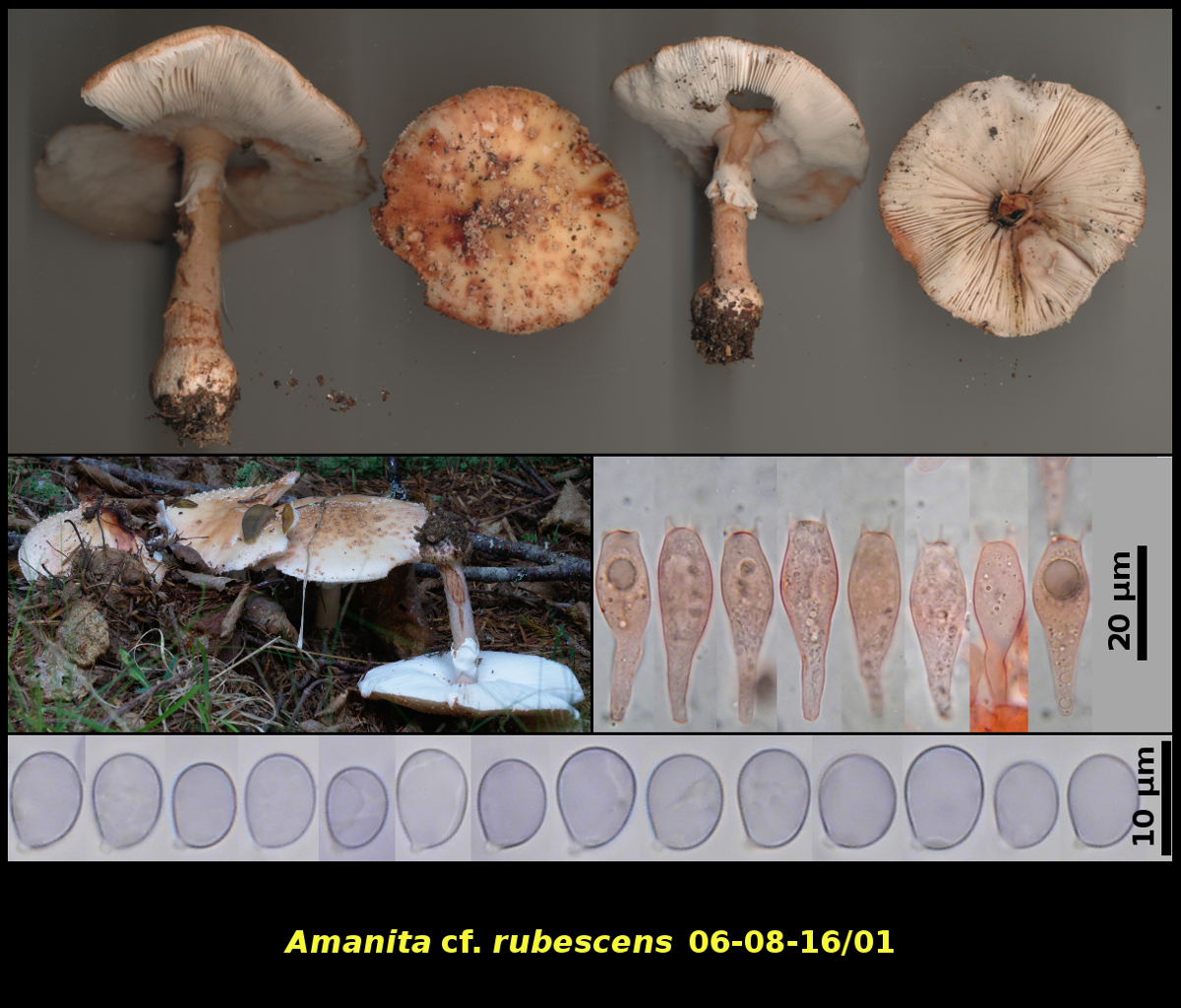Fleshy Fungi of New Brunswick >>
Amanita cf. rubescens
Amanita cf. rubescens Pers.

Gregarious in soil at margin of driveway under Abies balsamea and Larix laricina, Little Lepreau, Charlotte Co., New Brunswick (06-08-16/01).
Basidiospores white in spore print, ellipsoidal to obovoid, smooth, amyloid, 7.5- 9.1 X 5.1-7.1 μm, D/d = 1.23-1.60 (average[28]: 8.2 X 6.3 μm, D/d = 1.31).
This mushroom is one that has always been called A. rubescens in eastern North America, although it is not actually that species as it is known in Europe where it was described. According to Dr. R.E. Tulloss, a leading authority on Amanita, the eastern North American material is probably undescribed, but further molecular work is required before it is given a name. Tulloss has given it the provisional name A. amerirubescens, but for now we prefer using the convention of adding "cf." to the species name, indicating that it should be compared with the "real" A. rubescens. The species listed on our checklist as Amanita rubescens var. rubescens are probably the same as the one described here, but until those records are confirmed as such they will be maintained as a separate entry.
Amanita cf. rubescens is easily recognized in the field by its pale yellow to cream pileus covered with warts and patches from the universal veil, and especially by its pileus, stipe, lamellae and flesh that soon become red when bruised. The inverted-egg-shaped (obovoid) and amyloid basidiospores are also diagnostic.Photograph: D. Malloch (06-08-16/01).